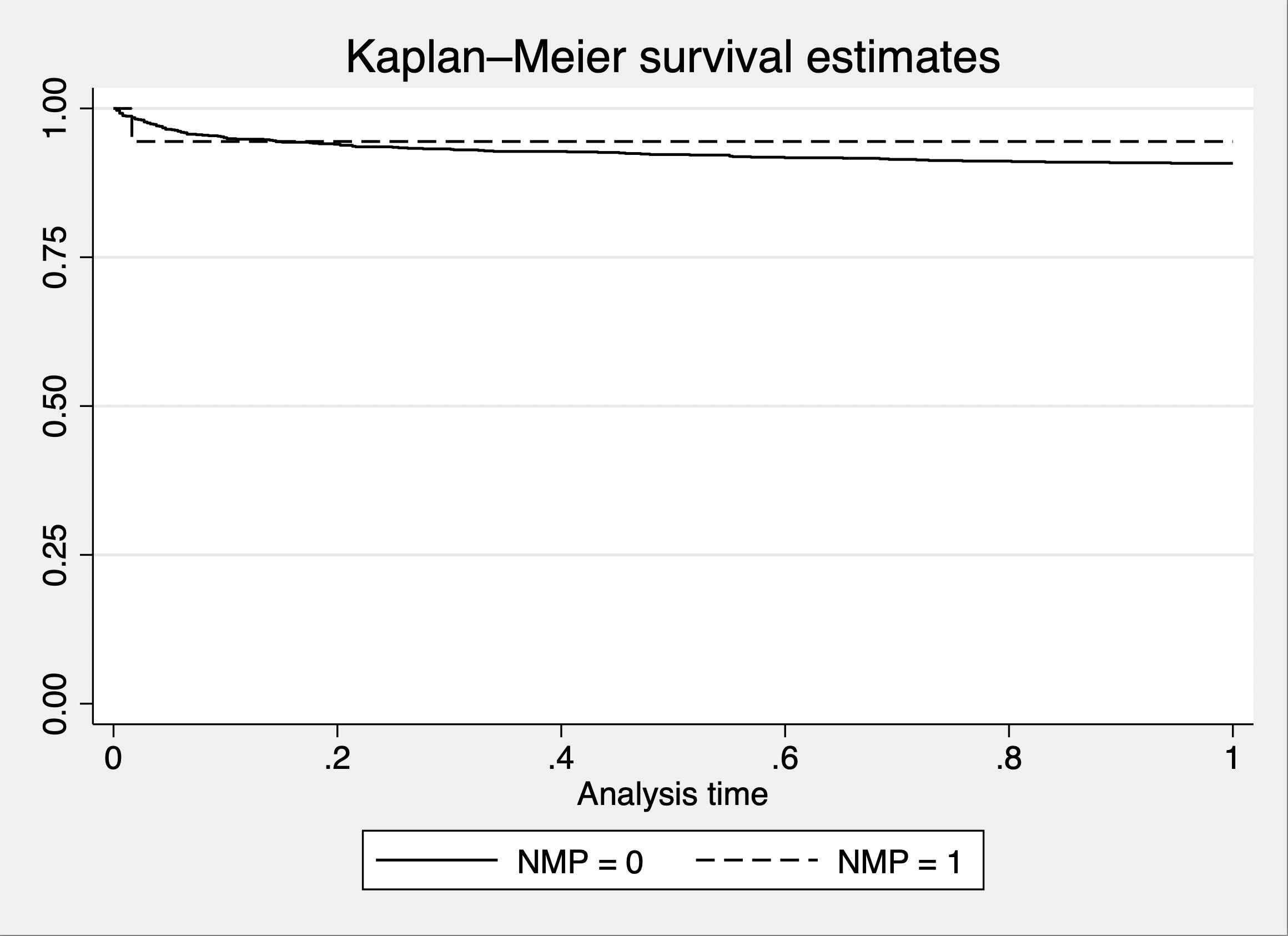Is portable normothermic machine perfusion the way forward for widespread adoption of split livers in the United States?
Christine Hwang1, Amal Aqul2, Yong Kwon1, Madhukar Patel1, Parsia Vagefi1, Malcolm MacConmara3.
1Surgery, UT Southwestern Medical Center, Dallas, TX, United States; 2Pediatrics, UT Southwestern Medical Center, Dallas, TX, United States; 3TransMedics, Andover, MA, United States
Introduction: Split liver transplants are less commonly performed in the United States. The use of portable normothermic machine perfusion (pNMP) along with size-reduction or split techniques has recently emerged as a novel strategy to manage time and logistic barriers. We examined use of split livers in the United States when combined with pNMP and how this compared to traditional cold storage.
Methods: Using the STARfile, all pediatric recipients (defined as those transplanted prior to the age of 18 years) who received a split or reduced liver transplant between January 1, 2016 and December 31, 2024 were identified. Patients were divided based upon those who were transplanted with livers preserved with static cold storage (SCS) to those who had livers preserved with pNMP. In addition, whole and split liver transplants using pNMP-preserved livers were also analyzed. Donor and recipient demographic data were examined, as were outcomes.
Results: During this period, 4226 pediatric liver transplants were performed. Of those, 1288 involved split livers, with 1267 (98.37%) preserved with SCS and 21 (1.63%) preserved using pNMP. The first split liver preserved with pNMP was performed in 2022, with subsequently increasing numbers to 6 in 2023, and 14 in 2024. The number of split-liver transplants performed with SCS remained relatively stable over this time at approximately 150 per year. Geographically, most splits with pNMP were performed in Regions 3 and 5. When comparing donor and recipient characteristics, the recipient age was lower in the SCS group compared to the pNMP group, at 2.57 +/- 3.70 years vs. 3.67 +/- 5.29 years (p<0.05); donor age was similar, at 18.9 +/- 9.5 years vs. 15.8 +/- 4.9 years (p=NS); cold storage time was shorter in the SCS group at 6.8 +/- 2.5 hours vs. 15.7 +/- 5.8 hours (p<0.05); and distance to transplant center was shorter with SCS at 268 +/- 277 miles vs. 730.9 +/- 579.9 miles (p<0.05). There were no significant differences in the groups in wait time (123 +/- 249 days vs. 126 +/- 207 days, p=NS), or the final MELD/PELD scores (13 +/- 16 vs. 15 +/- 15, p=NS). When examining outcomes, graft surival was 84.8% of SCS vs. 94.4% of pNMP patients, 9.2% SCS vs. 0% pNMP patients died, and 4.6% SCS vs. 5.6% pNMP patients were retransplanted (p=NS). Survival in the two groups were similar.

Characteristics of pNMP whole livers were compared to pNMP split livers. There were 38 total pNMP preserved livers transplanted, of which 17 were whole livers and 21 were splits. Recipients of whole pNMP livers were older, at 13.71 +/- 3.06 years vs. 3.67 +/- 5.29 years (p<0.05). Donors were also older in the whole group, 23.88 +/- 13.58 years vs. 15.76 + 4.95 years (p<0.05). Preservation time was similar in the groups (14.0 +/- 4.6 hours vs. 15.7 +/- 5.8 hours, p=NS), as was distance to transplant center (447.1 +/- 404.3 miles vs. 730.9 +/- 579.9 miles, p=NS). Wait-time was shorter for patients who received a split pNMP liver (321.8 +/- 432.7 days vs. 126.8 +/- 207.3 days, p<0.05), and similar MELD/PELD scores (21 +/- 15 vs. 15 +/- 15), whole vs. split, respectively. Outcomes were similar, with 93.8% vs. 94.4% patients alive, 6.3% vs. 0% patients who died, and 0% vs. 5.56% patients retransplanted, whole vs. split, respectively.
Conclusion: Use of split livers preserved with pNMP has increased significantly since 2022. Outcomes of split livers preserved with pNMP are comparable to those preserved with SCS, and offer advantages by overcoming ischemia time challenges. pNMP is a tool that can be used to increase the potential numbers of split liver transplants in pediatric liver transplantation in the United States.
References:
[1] transplantation
[2] pediatric
[3] split liver
[4] normothermic machine perfusion
[5] outcomes
Lectures by Christine Hwang
| When | Session | Talk Title | Room |
|---|---|---|---|
|
Thu-18 16:00 - 17:00 |
Best Liver Abstracts | Is Portable Normothermic Machine Perfusion the Way Forward for Widespread Adoption of Split Livers in the United States? | MOA 5 |
|
Sat-20 15:30 - 16:30 |
All about donors - education, assessment and management | Emergence of Normothermic Machine Perfusion in Pediatric Transplantation in the United States | MOA 4 |
|
Sun-21 07:00 - 07:50 |
Liver transplantation - expanding the donor pool | Practice Patterns of Normothermic Machine Perfusion Use in Pediatric Liver Transplantation | MOA 3 |
